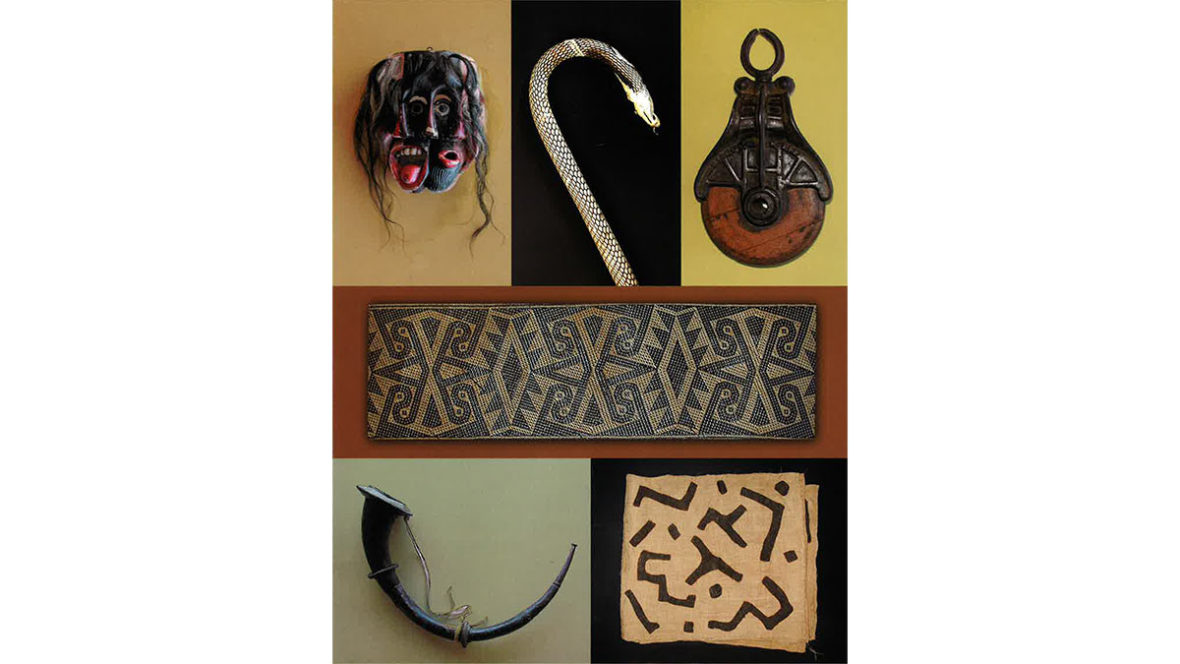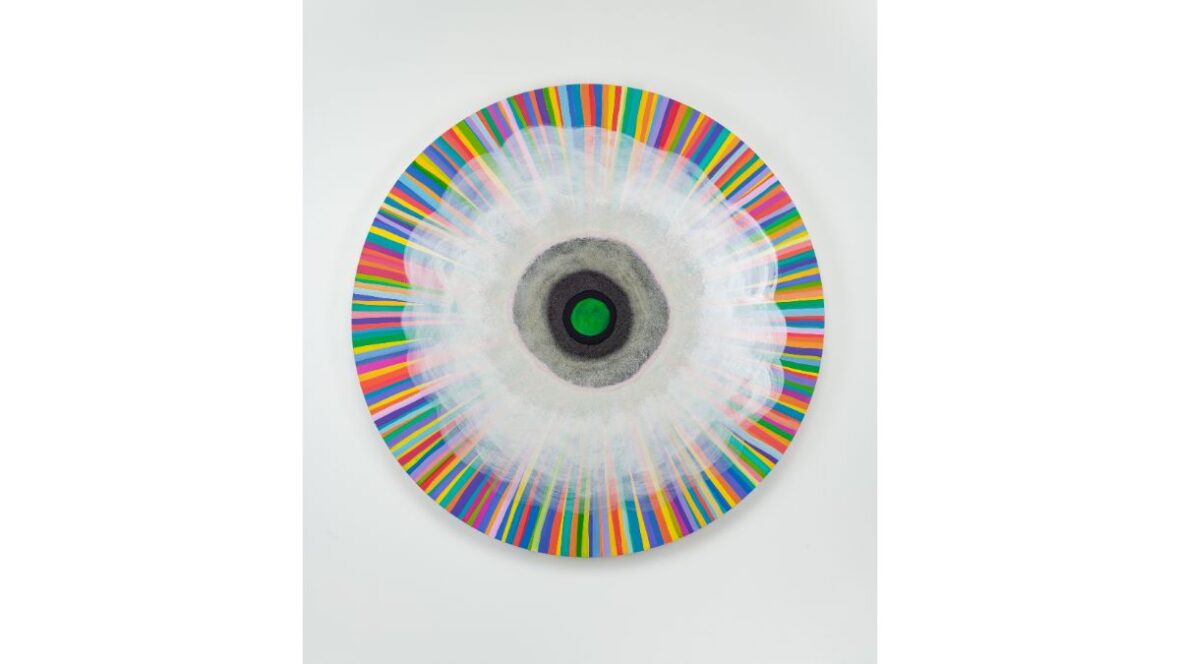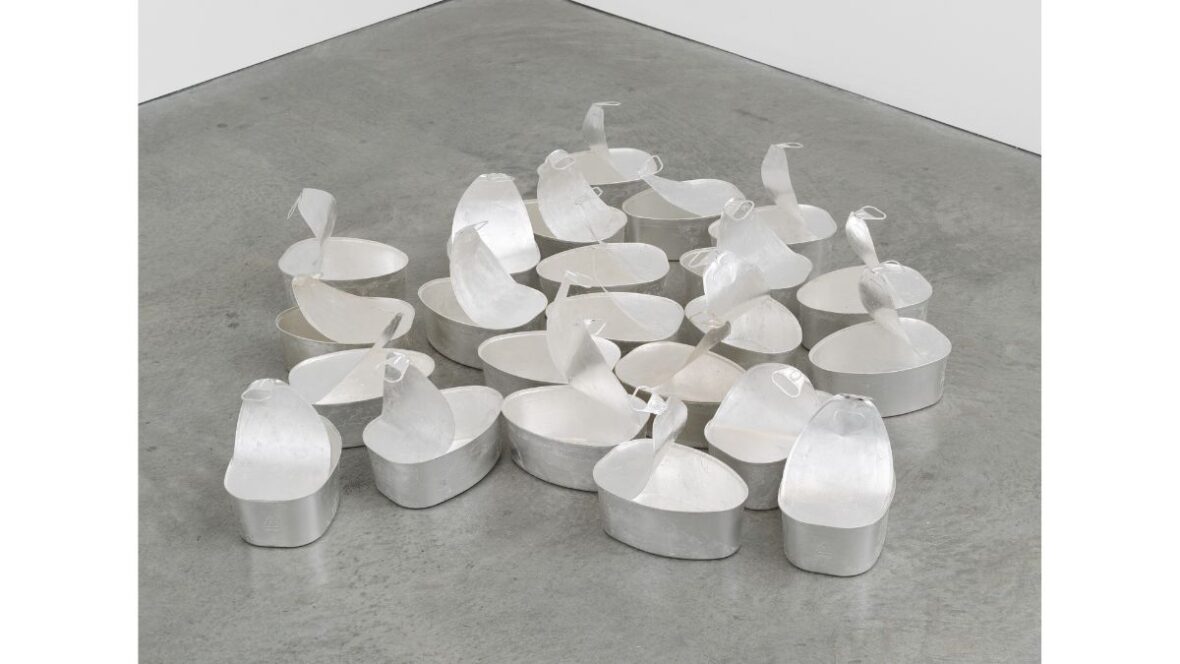Eloquent Objects
Exhibition Statement
This exhibition consisted of selections from six private Southern Oregon collections featuring Mexican folk art, traditional and decorative African sculpture and textiles, musical instruments spanning centuries and cultures from around the world, South East Asian tribal arts, and early American hand-built tools.
To collect is to engage in a series of deliberate acts leading to the accumulation and possession of objects related to one another by function, geography, timeframe, or cultural tradition. Some collections contain singular, expressive statements made by individuals who share ideas or work using the same material. From historic and traditional to contemporary work—whether made by schooled or outside artists—the focus of possible collections is literally limitless; so are the ways in which collections come into being.
People have collected literally anything and everything, from the mundane to the magnificent. Salt and pepper shakers, paperweights, antique toys, marbles, seashells, crystals, gems, orchids, coins, stamps, furniture, weathervanes, quilts, ethnic fabrics, manuscripts, autographs, books, guns, and love letters—each of these has, at one point or another, become the object of someone’s desire. Through the ages, the treasures of palaces, graves, and temples have been plundered by armies, adventurers, grave robbers, and thieves who traded their booty for fortunes willingly paid by those who prized what no one else possessed.
In the early decades of the twentieth century, a cook who owned a small bistro in Paris often served meals to poor and hungry artists. They, in turn, offered him the only possessions they had, namely their works of art. He ended up owning one of the great and highly prized art collections because those poor and hungry artists he fed were the seminal innovators and creators of Modern Art.
Dorothy and Herbert Vogel, a middle-aged couple who lived in New York City and earned a modest living as a postal worker and a teacher, saved whatever they could and bought small works of contemporary vanguard art. Their small apartment, including the space under their bed, was filled with their acquisitions by such artists as Sol LeWitt, Robert Morris, Sylvia Mangold, Chuck Close, Robert Mangold, Christo, Eva Hesse, and Richard Tuttle. The Vogels have arranged for their collection of more than 2,000 works to remain together after their deaths under the stewardship of the National Gallery of Art in Washington, D. C.
To collect requires an investment of time, care, connoisseurship, and patience, quite apart from the financial expenditure that grows exponentially with the collection. At its best, collecting brings enormous pride and pleasure to the serious collector; eventually, it can lead to ever increasing knowledge, through research and scholarly pursuits. In the process of locating their objects of desire, collectors must have the persistence of a detective, the intuition of a hunter, a serious case of obsessiveness, and, finally, the courage to throw caution to the wind and act swiftly, without hesitation.
The main goal of this exhibition was to present objects of unusual interest from a number of distinguished private collections in the Rogue Valley. Tangentially, we also sought to obtain a glimpse into the nature of our local collectors. What collectors focus on often provides not only insight into their interests and history, but also their values and relationship to aesthetics, as well.
Some collections are like memory banks that contain objects which have become markers on the road of a collector’s journey through life. The extent of the variety is a fairly accurate indicator of the collector’s adventurous spirit and willingness to be the connecting link between these objects when they originate from different cultural traditions. Kris and Wolfgang Hoppe’s collection could be seen that way.
A collection can also mirror one particular area of interest, such as the one that provides the underpinning of the Schuman collection: musical instruments invented in different times and cultures. This extraordinary collection includes string, wind, and percussion instruments of all kinds that span centuries in time and range widely in origin, from instruments used by elegant European court musicians to simple, rudimentary ones made by tribesmen in remote, primitive villages in Asia and Africa.
The folk art of Mexico chosen and collected by David Bobb for his home reflects all-embracing joie de vivre, a bold, almost wild love of color and an inclination toward the visually exciting and eccentrically imaginative. Clearly, his collection reveals a love for that territory where myth, fantasy, and mystery collide.
Dana and Robert Emory Johnson, on the other hand, present us with measured temperaments, Catholic tastes, and a considered, subtle appreciation for objects originating all over the world and throughout the centuries. They reflect aesthetically subdued delicacy, yet fully assured, poised presences—from tribal and contemporary art to sculpturally exquisite hand-built tools.
The Hearn family holdings were inherited from their father, Dr. Joseph E. Hearn, who lived and worked in Africa for many years. The objects and their origin are greatly prized by the family and have found their way into their home and offices.
John Barker’s overwhelming collection of South East Asian textiles, sculpture, and other arts of that region resulted from his familiarity with and vast knowledge of those cultural traditions. Having grown up in South East Asia and having then spent an additional seventeen years in that part of the world, Barker has continued and renewed his connection by yearly visits. Collecting developed into connoisseurship, which turned into expertise, eventually leading to his mixing pleasure with business. John Barker became a dealer in 1982 in South East Asian material and has contributed to the building of museum and private collections since then. He has also written two essays in the recently published book Textiles from Burma, produced in the UK by the James Green Center for World Art.
Some collections are meant for the delectation of many, others are kept like hidden treasure by secretive owners who revel in their private passions. No matter how we encounter such prized objects, they can teach us not only about their origin and use but can also reveal to us much about the pleasures of the eye and the harmonies of form and color, made by hands that embellished what often started as mere utilitarian objects. These eloquent objects are important to us—they illuminate the human need for aesthetic beauty and harmony.
—Josine Ianco Starrels, Curator
Curator
Josine Ianco Starrels
From the collections of:
John Barker
David Bobb
Chris and Susan Hearn
Wolfgang and Kris Hoppe
Robert and Dana Johnson
The Schuman Collection





